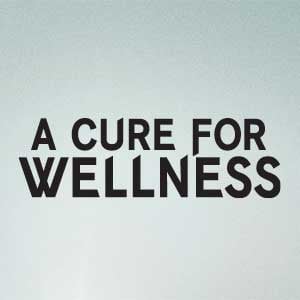Why On Earth Do We Love Psychological Thrillers?


From Gore Verbinski, the visionary director of The Ring, comes the psychological thriller A Cure For Wellness, now out on Blu-Ray and DVD.
Do you know what fear does to the mind? Corrodes it. Rusts it,” says a criminally insane asylum inmate in Martin Scorsese’s 2010 psychological thriller Shutter Island. So, why do we love watching movies that deliberately set out to scare us?
Basically, psychological thrillers let us feel fear in a controlled way, reeling us in slowly by deliberately building suspense. We go inside the heads of morally ambiguous characters as directors create moods of anxiety, fury and confusion. Like the characters, we struggle to figure out what’s really going on. And with a final shocking twist, the tension gives way to exhilaration.
Let’s take a look at some of the best of the best.
Wow, What a Twist!
Psychological thrillers are exciting because they’re designed to trick us. First, they establish a scenario; then they invite us to search for hidden meanings. Finally, there’s a subversive twist. The Prestige, Christopher Nolan’s 2006 thriller about competing stage magicians, is itself a magic trick. As this video essay points out, The Prestige is just as thrilling over multiple viewings.
The Sixth Sense (1999), M Night Shyamalan’s first – and still his best – film, is equally re-watchable. Once we know the twist, it’s supremely satisfying to think back over what we’ve previously seen, admiring the clues Shyamalan had seeded into the story.
What often gets lost in Shyamalan’s reputation as a gimmicky twistmeister is just how great he is at building a suspenseful atmosphere. He does this by showing us the small effects of terrors that remain unseen. Most of Signs (2002) is a series of uncanny events that are not individually very disturbing, but are scary because they allow our imaginations to run wild.
The Ring, Gore Verbinski’s 2002 remake of the Japanese horror film Ringu, is thrilling in the same way: by building up a disturbing pattern of events. Its protagonist, journalist Rachel Keller (Naomi Watts), gradually decodes the meaning of the killer videotape as she encounters each of its images in real life. While Samara climbing out of the television has become the film’s iconic shot, the scariest scene is when a horse on a ferry reacts to Rachel’s accursed presence with violent panic. It’s terrifying because it takes place entirely in the ordinary, everyday world.
Verbinski’s latest film, A Cure For Wellness, combines all the best bits of psychological thrillers like these. It follows Lockhart (Dane DeHaan), a young executive who arrives at a remote sanatorium in the Swiss Alps to retrieve his company’s CEO, but fails to heed the warnings of a mysterious girl (Mia Goth) and finds himself under the ‘treatment’ of the politely sinister head doctor, Volmer (Jason Isaacs).
As he explores the facility’s sinister secrets, Lockhart struggles to determine whether he’s being drugged or is truly ill. Like the best psychological thrillers, it’s a magic act we don’t fully appreciate until its final moments. Health has always been a prime target for real-life charlatans, who feed on the fears that already dwell within us. And this makes wellness a ripe subject for a psychological thriller because it can’t be seen… only felt.
Real-World Terrors
Life’s already pretty scary. We’re worried about what new technological and social shifts might mean for us, and we’re afraid to trust authority figures like bosses, politicians and doctors. We know weird cults and sinister con artists manipulate vulnerable people, that families hide dark secrets, and ugly things happen behind closed doors.
Watching psychological thrillers lets us confront these fears without having to act on them. In real life, the urge to pursue intense excitement – which psychologists call sensation-seeking – can involve recklessness and risk-taking. But at the movies, we get the same thrills by identifying with fictional characters whose behaviour is more outrageous than anything we’d try.
South Korean director Park Chan-wook’s Vengeance trilogy (2002-2005) sets up nightmarish predicaments for its characters, then makes us sympathise with their attempts to make things right. If your sister urgently needed an organ transplant you couldn’t afford, how far would you go to help her? What would you do if you were imprisoned without explanation for 15 years? After getting out of jail for a crime you didn’t commit, how would you punish the man who really did it?
And in his sumptuous The Handmaiden (2016), Park thrills us halfway through by making our sympathies do a 180. Just when we’re onside with petty criminal Sook-hee as she tries to swindle lonely heiress Hideko, Park flips to Hideko’s perspective, revealing her own secrets and schemes. Whoa!
Is The Thrill In Your Head… Or Your Pants?
You know what else is scary and thrilling? Sex. Alfred Hitchcock knew how to get hearts pounding in both ways, and in an era when overt sex references were censored, his films still fizz with treacherous lovers and coded ideas of repression, psychosis and sexual deviance. In Psycho, mama’s boy Norman Bates perves on Marion as she gets undressed at his motel. And in Rebecca (1940), creepy housekeeper Mrs Danvers lusts for her dead mistress by tormenting Rebecca’s naïve successor.
Hitchcock fanboy Brian De Palma paid homage to the voyeurism of Rear Window and the doppelgangers of Vertigo in 1984’s steamy Body Double. De Palma’s torrid tales helped popularise erotic thrillers, and Dutch provocateur Paul Verhoeven has happily joined in, from Basic Instinct (1992) right up to last year’s audacious Elle. The huge success of Gone Girl in 2014 also helped revitalise the erotic thriller genre.
Feature image: A Cure For Wellness/20th Century Fox
—
Gore Verbinski’s A Cure For Wellness is in cinemas March 16.